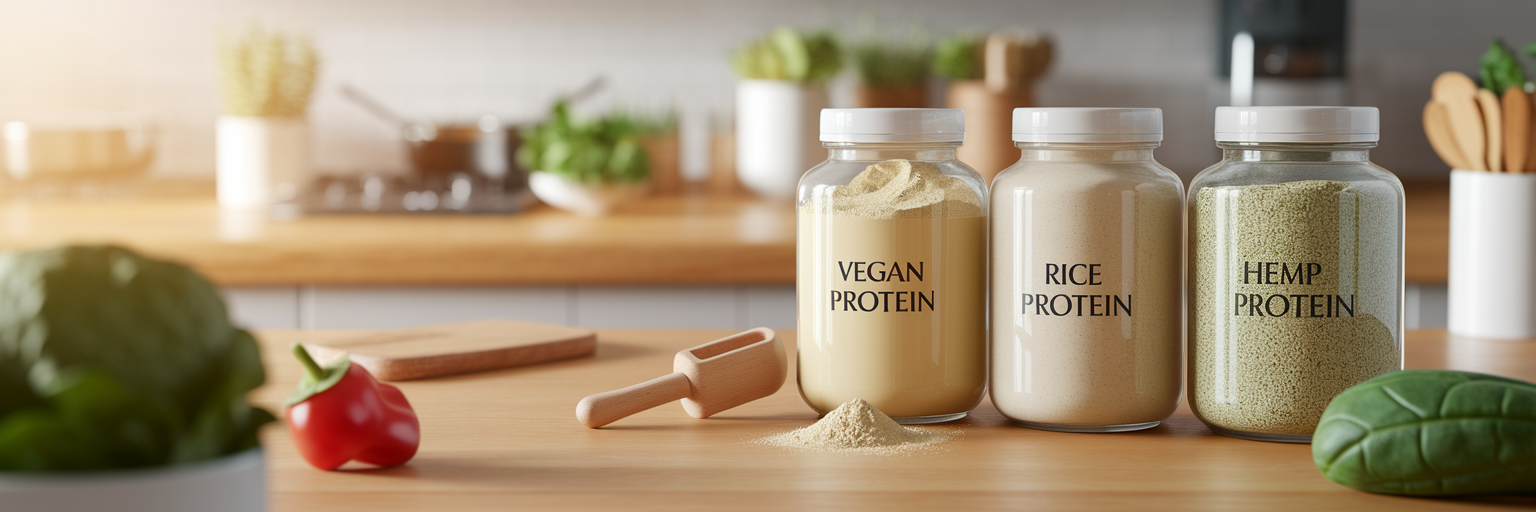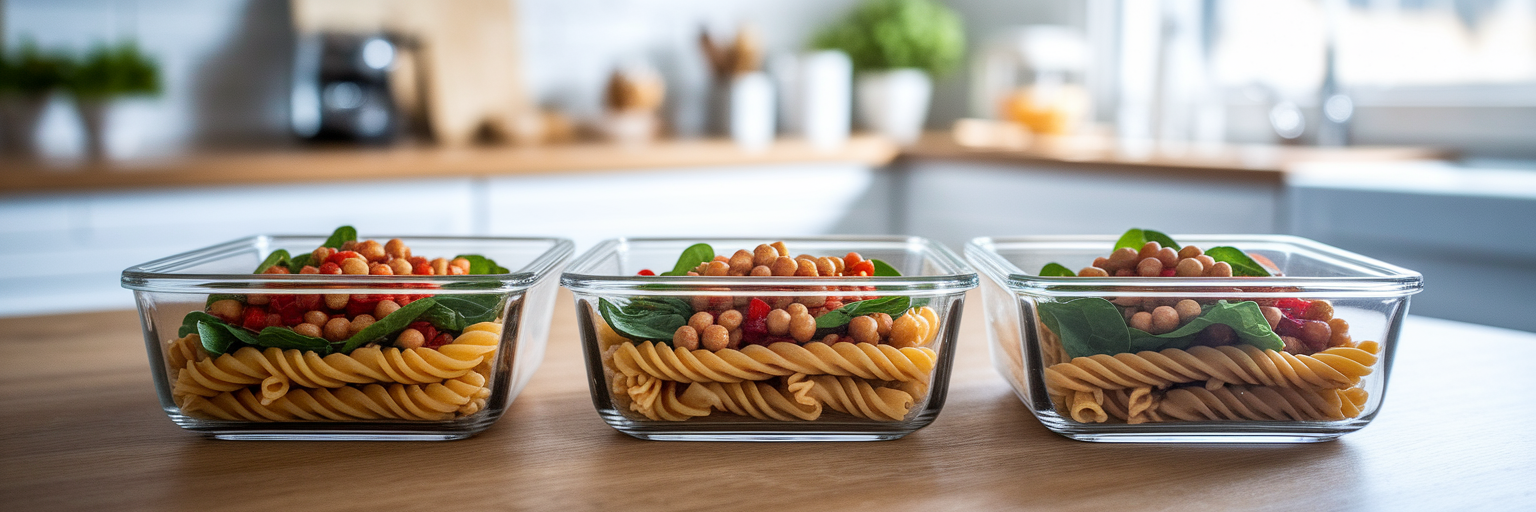Why Calorie Control Is Key with Protein Powder
We’ve all been there. You blend a "healthy" smoothie packed with fruit, nut butter, and a scoop of protein, only to realize it contains more calories than a milkshake. It’s a common pitfall when trying to eat well. Vegan protein powder is a fantastic tool for hitting your fitness goals, but it requires a thoughtful approach to avoid accidentally derailing your progress.
The issue often starts with the powder itself. Many flavored varieties come with hidden sugars, fats, and fillers that quickly add up. With the best intentions, it’s easy to overload your meals and undermine weight management efforts. This is why understanding how to use vegan protein powder mindfully is so important for any low calorie vegan meal prep plan.
Not all plant proteins are created equal in caloric density. For instance, some soy or rice protein isolates might offer more protein for fewer calories compared to certain hemp or blended formulas. The key is to see protein powder for what it is: a strategic supplement to a whole-foods diet, not a free-for-all meal replacement. The goal is to boost the protein in your meals to support muscle health and satiety without creating a large calorie surplus. It’s about making your food work smarter, not just adding more to it.
Choosing the Right Low-Calorie Vegan Protein

The secret to successful low-calorie meal prep starts long before you get to the kitchen. It begins with choosing the right ingredients, and your protein powder is no exception. With so many options on the shelf, knowing what to look for can make all the difference between a lean, effective supplement and a hidden calorie trap.
How to Read a Nutrition Label Like a Pro
Don't just look at the front of the package. The real story is on the back. Here’s what to focus on:
- High Protein-to-Calorie Ratio: A good benchmark is at least 20 grams of protein for around 100–120 calories per serving. This ensures you’re getting a concentrated protein source.
- Low Added Sugar: Scan the label for powders with 3 grams of sugar or less per serving. Many brands use sweeteners that can add unnecessary calories.
- Short Ingredient List: Fewer ingredients, especially ones you can pronounce, is generally a positive sign. It means less room for fillers and artificial additives.
Unflavored vs. Flavored: The Meal Prep Dilemma
While vanilla or chocolate powders are great for shakes, unflavored protein is the unsung hero of meal prep. Its versatility is unmatched. You can add it to savory dishes like soups and sauces or mix it into oatmeal and baked goods without creating a flavor clash. This makes it the best vegan protein for cooking, as it enhances nutrition without dictating the taste of your meal.
A Quick Guide to Protein Types
Different plant proteins have unique textures and properties. Pea protein tends to be thick and creamy, while rice protein can be lighter. Blends often provide a more complete amino acid profile and a balanced texture. To ensure quality, look for third-party certifications like NSF or Informed-Sport, which verify that the product contains what it says it does. Finding the right fit depends on your goals and recipes, and exploring some of the best protein powders we've reviewed can help you make an informed choice.
| Protein Type | Typical Calories (per 25g Protein) | Best For (Cooking Application) | Common Texture |
|---|---|---|---|
| Pea Protein | ~120 calories | Smoothies, sauces, baked goods | Thick, smooth, creamy |
| Rice Protein | ~110 calories | Smoothies, mixing into oats | Slightly gritty, light |
| Hemp Protein | ~130 calories | Energy balls, baked goods | Earthy, slightly gritty |
| Soy Protein Isolate | ~110 calories | Smoothies, soups, versatile | Very smooth, neutral |
Smart Portioning for Protein Without the Pounds
Now that you’ve chosen the right powder, let's talk about how much to use. It’s tempting to follow the instructions on the tub and use a full, heaping scoop every time. But for strategic meal prep, a more measured approach often works better, especially when your goal is vegan meal prep for weight loss.
Ditch the 'Full Scoop' Mindset
Instead of defaulting to a full 30-gram scoop, consider the half-scoop. Using just 10–15 grams of powder is often enough to significantly boost the protein content of a meal without drastically changing its calorie count or texture. This small adjustment can be the difference between a balanced meal and a calorie overload.
Why a Food Scale is Your Best Friend
Scoops can be notoriously inaccurate. One person's "level scoop" is another's heaping mound. A food scale removes all guesswork. When you measure out a precise 15-gram serving, you know you’re adding about 10–12 grams of high-quality protein for only 50–60 calories. This precision is what separates successful macro tracking from wishful thinking.
The 'Protein Sprinkling' Technique
Rather than consuming all your supplemental protein in one large shake, try "sprinkling" it across your meals. A small amount whisked into your morning oatmeal, a bit stirred into a lunchtime soup, or mixed into a hummus dip for your afternoon snack can help you maintain a steady protein intake throughout the day. This approach promotes satiety and keeps your energy levels stable. According to an article from Healthline, consuming protein from both whole foods and supplements is a safe and effective strategy for most healthy individuals. For more tips on building healthy habits, you can explore the articles on our blog.
Creative Low-Calorie Meal Prep Recipes

Putting these principles into practice is where the fun begins. With the right techniques, you can create delicious and satisfying high protein vegan recipes that support your goals. Here are a few creative ideas to get you started on your low calorie vegan meal prep journey.
- Savory Secrets: Unflavored protein powder works wonders in savory dishes. Try whisking a half-scoop into a simmering tomato sauce to add creaminess and a protein punch. You can also mix it into a roasted red pepper dip or use it as a binder in lentil loaves and veggie burgers to improve their texture and nutritional profile.
- Smarter Sweets: You can still enjoy sweet treats. Mix a small amount of protein powder into overnight oats or chia seed pudding for a filling breakfast. When making energy balls, remember that portion control is key. Think of them as a one-or-two-a-day snack, not a free-for-all.
- The Lean Green Smoothie Formula: For a smoothie that fuels you without the sugar crash, stick to a simple formula. Combine 1/2 scoop of protein powder, a large handful of spinach, 1/2 cup of low-sugar berries (like raspberries or blackberries), and unsweetened plant-based milk. Avoid calorie-dense additions like fruit juices or large amounts of high-sugar fruits like mango or banana.
- Building the Perfect Meal Prep Bowl: Visualize a balanced and colorful meal. Start with a base of quinoa, top it with roasted broccoli and chickpeas, and serve it with a side of protein-fortified hummus. This approach combines nutrient-dense whole foods with a supplemental protein boost for a perfectly balanced meal. For more inspiration, check out these 3 easy vegan protein recipes we put together.
Building a Balanced Plate Beyond the Powder
After all this talk of powders and scoops, it’s important to bring the focus back to what matters most: a holistic approach to nutrition. Remember, protein powder is a supporting actor, not the star of the show. The foundation of a healthy diet should always be a colorful variety of whole foods. This is the cornerstone of balancing macros on a vegan diet effectively.
The Vegan Plate Method
A simple way to ensure you’re getting a balanced meal is to use the Vegan Plate Method. It’s an easy-to-remember visual guide:
- Fill half of your plate with non-starchy vegetables like broccoli, bell peppers, leafy greens, and zucchini.
- Fill one quarter of your plate with a whole-food protein source, such as lentils, tofu, beans, or tempeh.
- Fill the final quarter of your plate with complex carbohydrates like quinoa, brown rice, or sweet potato.
This framework ensures you’re getting a rich mix of vitamins, minerals, and phytonutrients. The fiber from these whole foods is also critical. It promotes a feeling of fullness, which naturally helps regulate your appetite and makes the supplemental protein from your powder even more effective for your goals.
Ready to put these tips into action? We invite you to share your own meal prep ideas in the comments below! And if you're looking for a clean supplement to get started, explore our collection of clean, plant-based proteins to find the perfect fit for your kitchen.



